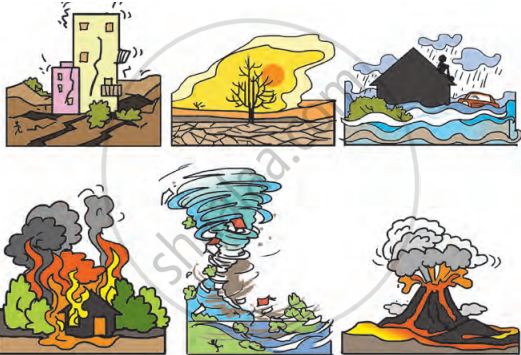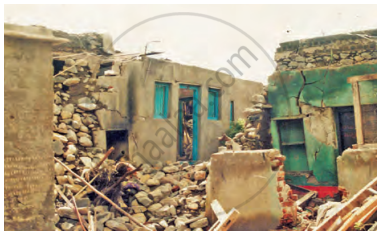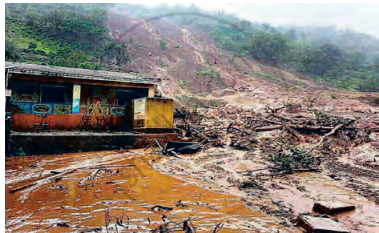Topics
Heredity and Evolution
- Heredity or Inheritance
- Protein Synthesis
- Transcription, Translation and Translocation
- Protein Synthesis
- Protein Synthesis
- Organic Evolution
- Theories of Origin of Life
- Evolution and Classiffication
- Evidences for Biological Evolution
- Darwinism
- Lamarck’s Theory of Evolution
- Speciation
- Human Evolution
Life Processes in Living Organisms Part -1
- Living Organisms and Life Processes
- Living Organism and Energy Production
- Formation of ATP
- Energy Production in Living Organism
- Cell Division: an Essential Life Process
- Mitosis and Its Phases
- Phases of Mitosis: Karyokinesis (Division of Nucleus)
- Phases of Mitosis: Cytokinesis (Division of Cytoplasm)
- Significance of Mitosis
- Meiosis as a Reduction Division
- Stages of Meiosis: Meiosis I
- Stages of Meiosis: Meiosis II
- Significance of Meiosis
- Differences Between Mitosis and Meiosis
Life Processes in Living Organisms Part - 2
- Introduction to Life Processes in Living Organisms
- Asexual Reproduction in Animal
- Fission
- Fragmentation
- Regeneration
- Budding
- Sporulation (Sporogenesis)
- Asexual Reproduction in Plant
- Budding
- Vegetative Reproduction
- Reproduction
- Sexual Reproduction in Flowering Plants
- Sexual Reproduction in Animals
- Human Reproduction
- The Male Reproductive System
- The Female Reproductive System
- Gametogenesis
- Fertilization in Human
- Embryonic Development in Human
- Implantation in Human
- Pregnancy in Humans
- Placenta (Growth) in Human
- Parturition (Birth) in Human
- Menstrual Cycle (Ovarian Cycle)
- Reproduction and Modern Technology
- Reproductive Health
Environmental Management
- Our needs and the Environment
- Ecosystem
- Structure and function of an Ecosystem
- Relationship Between Environment and Ecosystem
- Environmental Balance
- Environmental Conservation
- Environmental Conservation and Biodiversity
- Endangered Species
Towards Green Energy
- Energy and Use of Energy
- Generation of Electrical Energy
- Heat Energy (Thermal Energy)
- Nuclear Energy
- Natural Gas Energy
- Electric Energy Generation and Environment
- Hydroelectric Energy
- Wind Energy
- Solar Energy
- Solar Energy
Animal Classification
- Biological Classification
- Classification of Living Organisms
- Taxonomic Hierarchy of Living Organisms: Unit of Classification
- New Criteria for Basis of Classification
- History of Animal Classification
- Traditional Method of Animal Classification
- Five Kingdom Classification
- Phylum: Porifera
- Phylum: Cnidaria/Coelenterata
- Phylum: Platyhelminthes
- Phylum: Aschelminthes
- Phylum: Annelida
- Phylum: Arthropoda
- Phylum: Mollusca
- Phylum: Echinodermata
- Phylum: Hemichordata
- Phylum: Chordata
- Kingdom Animalia
- Chordata: Vertebrata
Introduction to Microbiology
- Microorganisms (Microbes) and Microbiology
- Applied Microbiology
- Industrial Microbiology
- Useful micro-organisms
Cell Biology and Biotechnology
- Cell Biology (Cytology)
- Stem Cells
- Organ Transplantation
- Organ and Body Donation
- Biotechnology
- Commercial Applications of Biotechnology
- Modern Agricultural Practices and Crop Improvement
- Important Stages in Agricultural Development
Social Health
- Social Health
- Factors Disturbing the Social Health
- Communication Media and Excessive Use of Modern Technology
- Stress Management
Disaster Management
- Disaster
- Effects of Disaster
- Nature and Scope of Disaster
- Disaster Management
- Classification of Disaster Management
- Disaster Management Cycle
- Structure of Disaster Management Authority
- First Aid and Emergency Action
- Mock Drill
Life's Internal Secrets
The Regulators of Life
- Coordination in Plants - Introduction
- Control and Co-ordination in Plants
- Human Nervous System
- Central Nervous System (CNS)
- Chemical Control
The Life Cycle
Mapping Our Genes
Striving for Better Environment 2
- Use of Efficient and Eco-friendly Technology
- Sustainable Use of Resources
- Enforcement of Acts, Laws and Policies
Understanding Metals and Non-Metals
Amazing World of Carbon Compounds
- Definition
- Example of Disaster
- Reasons Behind the Occurrence of Disasters
- Types of Disasters
Definition:
A sudden event that causes large-scale damage to life, property and social aspects of a nation or society is called a disaster.

Some disastrous events
Examples of Disasters:
- Landslide in Malin (July 2014): In the village of Malin, located in the Pune district, a landslide buried the entire village in a few minutes. Many people lost their lives as they were buried under soil and stones.
- Floods in Tamil Nadu (November 2015): Heavy rains caused flooding in Tamil Nadu, which resulted in many deaths and significant damage to property.
- Earthquake in Killari (1993): A powerful earthquake struck Killari in Latur district, leading to the deaths of many people.
- Mumbai Deluge (July 2005): Heavy rains caused massive flooding in Mumbai, leading to a great loss of life and property.

Effects of the earthquake at Killari

The disaster at Malin village
Reasons Behind the Occurrence of Disasters:
- Floods: Heavy rains can cause rivers and lakes to overflow, leading to floods that damage homes and fields.
- Earthquakes: The shaking of the earth's surface due to movement underground can destroy buildings and roads.
- Lightning and Volcanic Eruptions: Sudden natural events, such as lightning strikes or volcanoes erupting, can cause fires and destroy areas.
- Forest Fires: Dry conditions, lightning, or human activities can cause large fires that spread rapidly and destroy forests.
- Human Activities: Human activities such as overpopulation, irregular construction, and ecological imbalance can also cause disasters.
- Terrorism and Crimes: Man-made disasters, like bomb explosions, riots, and accidents, can cause great harm to people and property.
Types of Disasters
1. Natural Disasters: These disasters are caused by natural forces, and they happen without human involvement.
For example:
- Floods
- Earthquakes
- Landslides
- Volcanic Eruptions
- Forest Fires
2. Man-made Disasters: These are disasters caused by human activities, either accidentally or intentionally.
For example:
- Bomb Explosions
- Riots and Crimes
- Ecological Imbalance
- Industrial Accidents
If you would like to contribute notes or other learning material, please submit them using the button below.
Related QuestionsVIEW ALL [46]
Name the type of disaster.
| Disaster | Type |
| Tsunami, volcanic eruption, earthquake | __________ |
| Cyclone, snow storms, droughts, floods | __________ |
| Forest fire, weed, fungal disease spreading | __________ |
| Communicable virus, bacteria, bite of poisonous animal | __________ |
| Poisonous gases, atomic test, unplanned action, accident | __________ |
Match the following:
| Trembling | a. | Mental or emotional state of a person |
| Preventive | b. | to stop fire or light |
| Extinguish | c. | a serious, or dangerous situation |
| Emergency | d. | stop something before it happens |
| Psychological | e. | shaking or vibration |
